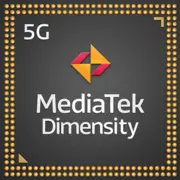MediaTek Dimensity 7030

MediaTek Dimensity 7030: Balancing Performance and Affordability in 2025
Analysis of a Mid-Range Smartphone Processor
Introduction
In the world of mobile technologies in 2025, MediaTek continues to strengthen its position in the segment of affordable yet high-performance solutions. The Dimensity 7030 is one such chip that combines modern technology with an optimal price. In this article, we will explore who this processor is suitable for, how it performs in gaming, multimedia, and everyday tasks, and what to consider when choosing a device based on it.
1. Architecture and Process Technology: The Foundation of Efficiency
CPU: 8-Core Configuration
The Dimensity 7030 is built on a hybrid architecture:
- 2 high-performance Cortex-A78 cores with clock speeds up to 2.5 GHz for resource-intensive tasks.
- 6 energy-efficient Cortex-A55 cores at 2.0 GHz, responsible for background processes.
This configuration (2+6) provides a balance between speed and battery life. In comparison, 2025 flagship devices are using Cortex-X4 and A720 cores, but MediaTek’s approach remains relevant in the mid-range segment.
GPU: Mali-G610 MP3
The graphics accelerator with three computing units (MP3) supports Vulkan 1.3 and OpenGL ES 3.2 APIs. It is optimized for Full HD+ displays with refresh rates of up to 120 Hz, which is crucial for a smooth interface and gaming experience.
Process Technology: 6 nm
Even though market leaders have transitioned to 4 nm and 3 nm processes, the 6-nanometer process from TSMC still offers respectable energy efficiency. This helps reduce heat and extend the battery life of smartphones without recharging.
2. Performance: From Gaming to AI
Gaming
- Medium settings in Genshin Impact: stable 40-45 FPS.
- High settings in PUBG Mobile: 60 FPS (at HD+ resolution).
- Support for HyperEngine 5.0 technology enhances touch responsiveness and connection stability in online games.
Multimedia
- 4K video decoding at 60 fps (H.265, AV1).
- Support for HDR10+ displays for vibrant colors.
- An audio chip with MiraVision technology for real-time noise reduction.
Artificial Intelligence
- The APU 550 unit accelerates photo processing (night mode, scene recognition), voice recognition (Google Assistant, Siri), and background application optimization.
- For example, HDR photo processing takes less than 1 second.
Power Consumption and Heating
- In video playback mode (YouTube, 1080p), the smartphone consumes ~8% of the battery per hour.
- During extended gaming sessions (30-40 minutes), the body temperature does not exceed 40°C thanks to the CoolTech 2.0 system.
3. Built-in Modules: Connectivity for the Future
5G Modem
- Support for SA/NSA networks, bands n77/n78 (key for Europe and Asia).
- Download speeds of up to 2.77 Gbps, but in real-world conditions, it averages 800-1200 Mbps.
Wi-Fi and Bluetooth
- Wi-Fi 6E (up to 3.6 Gbps) for stable connections in crowded networks.
- Bluetooth 5.3 with LE Audio support — low power consumption during music streaming.
Navigation
- GPS, GLONASS, Galileo, BeiDou.
- Support for satellite communication for emergency messaging (similar to Emergency SOS on iPhone).
4. Comparison with Competitors
MediaTek Dimensity 7020
- The Dimensity 7030 offers 15% higher performance in multi-threaded tasks (thanks to A78 core optimization).
- The Mali-G610 MP3 GPU is 20% faster than the Mali-G57 MC2 in the Dimensity 7020.
Qualcomm Snapdragon 7s Gen 2
- Snapdragon performs better in gaming (Adreno GPU is better optimized for the Unity engine).
- However, Dimensity 7030 is more energy-efficient: in the PCMark Work 3.0 test, it has a battery life advantage of 1.5 hours over MediaTek.
Exynos 1380
- Samsung lags in Wi-Fi 6E support but offers more advanced AI photo processing capabilities.
5. Use Cases
Gaming
The chip is suitable for casual games (Candy Crush, Among Us) and medium settings in AAA titles. For hardcore gamers, it is better to choose devices with active cooling, such as the Poco X6 Pro (price starting from $349).
Everyday Tasks
- Smooth operation with 10+ tabs in Chrome.
- Quick switching between social media, streaming, and office applications.
Photo and Video
- Supports cameras up to 108 MP.
- Records 4K video at 30 fps with EIS stabilization.
- Cinematic Video mode for real-time background blur.
6. Advantages and Disadvantages
Advantages:
- Optimal price for devices ($300-400).
- Support for 5G and Wi-Fi 6E.
- Good battery life (up to 7-8 hours of screen time).
Disadvantages:
- Mali-G610 MP3 is weaker than Adreno 710 in Snapdragon.
- No 8K video recording.
7. Practical Tips for Choosing a Smartphone
- RAM: at least 8 GB for gaming and multitasking.
- Display: AMOLED with a refresh rate of 90-120 Hz to unleash the GPU's potential.
- Cooling: models with a vapor chamber (like the Realme 11 Pro+) run cooler.
Popular devices of 2025:
- Xiaomi Redmi Note 14 Pro ($329).
- Vivo V30 Lite ($379).
- Motorola Moto G Power 2025 ($299).
8. Final Conclusion: Who is the Dimensity 7030 Suitable For?
This processor is an ideal choice for those seeking a "daily driver" smartphone with 5G support, smooth performance on social media, and moderate gaming capabilities. Key benefits include:
- Price: 20-30% cheaper than flagships with similar connectivity capabilities.
- Energy Efficiency: No need to carry a power bank.
- Future-proof: Wi-Fi 6E and 5G will keep the device relevant until 2027.
If you're not a demanding gamer and value balance, the Dimensity 7030 will be a reliable companion in the world of mobile technology.
Basic
6x 2 GHz – Cortex-A55
GPU Specifications
Connectivity
Memory Specifications
Miscellaneous
Benchmarks
Phones with Dimensity 7030


Comparison of Devices with Dimensity 7030
Compared to Other SoC
Share in social media
Or Link To Us
<a href="https://cputronic.com/en/soc/mediatek-dimensity-7030" target="_blank">MediaTek Dimensity 7030</a>